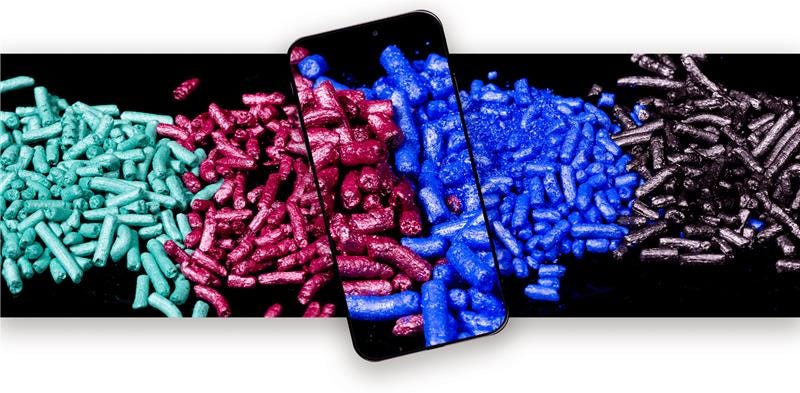Tranexamic Acid in Serums, Creams, or Toners: Choosing the Right Format
Tranexamic Acid has quickly become a go-to ingredient for formulators targeting hyperpigmentation, melasma, and overall skin tone unevenness. Known for its ability to inhibit melanin transfer and calm inflammation, it offers a gentler alternative to ingredients like hydroquinone—while still delivering visible results.
But while the ingredient is trending, its success in a finished product hinges on more than just inclusion. The format you choose—serum, cream, toner—can significantly impact both efficacy and user experience. Different textures offer different contact times, penetration profiles, and compatibility with skin types and routines.
Serums: Targeted and Potent
Serums are often the go-to format for high-performance actives—and for good reason. With their lightweight, fast-absorbing textures and water-rich bases, serums are ideal for delivering Tranexamic Acid directly to the skin with minimal barriers.
Formulators typically use Tranexamic Acid at levels between 2–5% in serums, where it can be layered easily with other actives in a routine. Thanks to its water solubility, Tranexamic Acid is highly compatible with most aqueous serum systems, especially those based on glycerin, butylene glycol, or sodium PCA.
Key formulation considerations:
- pH Range: Keep the formulation between pH 5–7 for optimal stability and skin compatibility.
- Stability Support: Add chelating agents like EDTA and consider antioxidants or preservatives that maintain integrity in water-based systems.
- Compatible Actives: Niacinamide, azelaic acid, licorice root extract, and peptides can enhance brightening effects without triggering irritation.
Serums are especially effective for consumers dealing with stubborn dark spots, post-inflammatory hyperpigmentation, or melasma, making them the preferred format for intensive treatment regimens. Use this format when you're looking for maximum potency and targeted delivery.
Creams: Barrier Support + Brightening
Creams offer more than just hydration—they’re also an excellent vehicle for delivering Tranexamic Acid alongside nourishing, barrier-repairing ingredients. For consumers with dry, sensitive, or mature skin, creams provide a richer, more comforting experience while still addressing pigmentation concerns.
While Tranexamic Acid is water-soluble, it performs well in oil-in-water emulsions commonly used in creams. Formulators can incorporate it into the aqueous phase and pair it with emollients and occlusives to slow transepidermal water loss (TEWL) and support skin recovery—especially important for those with a compromised skin barrier due to sun damage or over-exfoliation.
Key formulation considerations:
- Emulsion Type: Oil-in-water systems allow for easy incorporation of water-soluble actives like Tranexamic Acid.
- Complementary Ingredients: Combine with ceramides, cholesterol, fatty acids, and soothing actives like panthenol or allantoin for added skin barrier support.
- Texture: Adjust the sensory profile depending on the intended use—lighter for day creams, richer for overnight treatments.
This format is ideal for products that double as a moisturizer and brightening treatment, making it highly functional in minimal or simplified skincare routines. Creams also allow for layering-friendly actives, making them great companions in systems that include serums or exfoliants.
Toners: Gentle, Everyday Brightening
Toners are a versatile and often underestimated format for delivering actives like Tranexamic Acid. With their low viscosity and fast-absorbing nature, toners offer an easy entry point for consumers new to brightening ingredients or looking for lightweight, non-greasy options.
Formulators can incorporate Tranexamic Acid into water-based toner systems at lower concentrations (1–2%) for daily, gentle use—particularly beneficial for sensitive skin types or those using more aggressive actives elsewhere in their routine. Toners can serve as a prep step to enhance penetration of serums or creams layered afterward.
Key formulation considerations:
- Aqueous Base: Use hydrating solvents like glycerin, propylene glycol, or pentylene glycol to create a soft, non-stripping finish.
- Supportive Ingredients: Add skin-soothers like panthenol, allantoin, or green tea extract to calm potential irritation and boost tolerance.
- pH Range: Maintain between 5.0–7.0 to preserve Tranexamic Acid stability and barrier compatibility.
Toners with Tranexamic Acid are ideal for formulas targeting post-inflammatory hyperpigmentation, uneven skin tone, or dullness—particularly for consumers looking for gentle, everyday use without adding more steps to their routine.
Choosing the Right Format Based on Skin Type and Use Case
While Tranexamic Acid is a versatile brightening active, the format you choose can dramatically impact both performance and user satisfaction. Different skin types and routines call for different delivery systems—so choosing the right one depends on how the consumer will use the product and what other actives are present in the system.
Serums
- Best for: Normal to oily skin, targeted treatment routines, layering with other actives
- Why: Delivers high concentrations with fast absorption and minimal interference from occlusives
- Ideal use case: Nighttime brightening routine or spot treatment
Creams
- Best for: Dry, sensitive, or mature skin, barrier-compromised users
- Why: Combines moisturization and treatment in one step; adds comfort while delivering actives
- Ideal use case: Dual-function daily moisturizer + pigmentation corrector
Toners
- Best for: Sensitive or reactive skin, minimal routines, early-stage users
- Why: Lightweight, layerable, and gentle; perfect for beginners or those using multiple actives
- Ideal use case: Daily prep step to enhance glow and hydration
This format-first approach helps formulators align product design with consumer lifestyle and skin needs, making Tranexamic Acid more accessible and effective across categories.
Tranexamic Acid is a powerful, skin-brightening ingredient with growing demand across skincare categories—but its impact depends heavily on how it's delivered. Whether you're formulating a high-potency serum, a nourishing cream, or a gentle toner, understanding the role of format ensures you're not just adding an ingredient—you're maximizing its efficacy and user experience.
By choosing the right format for the target skin type and routine, formulators can create products that deliver visible results while meeting the needs of today’s ingredient-savvy consumers.
Ready to start formulating? Explore our full range of brightening actives and formulation-friendly ingredients, including Tranexamic Acid and synergistic actives like niacinamide, peptides, and botanical extracts.




